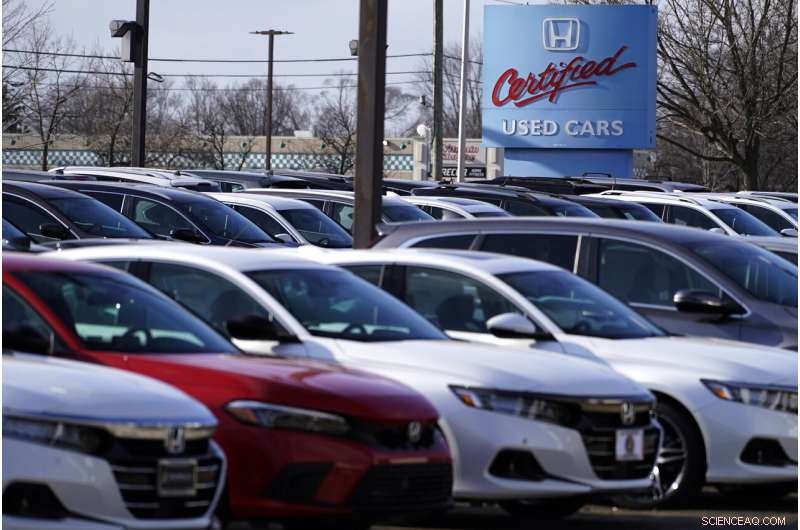
En återförsäljarskylt syns utanför Honda-certifierade begagnade bilhandlare i Schaumburg, Illinois, torsdagen den 16 december 2021. Priserna för begagnade bilar har skjutit i höjden så högt, så snabbt, att köparna alltmer prissätts bort från marknaden. Kredit:AP Photo/Nam Y. Va
För ett par månader sedan besökte en kvinna Jeff Schriers begagnade bilplats i Omaha, Nebraska. Hon hade en stram budget, sa hon, och var desperat efter ett fordon för att pendla till jobbet.
Hon visades tre bilar som låg till sin gräns, ungefär $7 500. Schrier sa att kvinnan var chockad.
"'Det är vad jag får för $7 500?'" mindes han att hon sa. Fordonen hade mycket mer ålder eller körsträcka på sig än hon hade förväntat sig för att något skulle ersätta en bil som hade blivit total i en krock.
Kvinnan bosatte sig så småningom på en 2013 Toyota Scion med hela 160 000 miles på den. Schrier är inte säker på att han gjorde någon vinst på affären. "Vi hjälpte henne precis", sa han.
Eftersom priserna för begagnade fordon går förbi vilken som helst till synes rationell nivå, är det den typ av scenario som utspelar sig hos många bilhandlare över hela landet. Priserna har skjutit i höjden så högt, så snabbt, att köpare prissätts alltmer från marknaden.
Tänk på att det genomsnittliga priset på ett begagnat fordon i USA i november, enligt Edmunds.com, var 29 011 $ - svindlande 39% mer än bara 12 månader tidigare. Och för första gången som någon kan minnas har mer än hälften av USA:s hushåll lägre inkomst än vad som anses nödvändigt för att köpa det genomsnittliga prissatta begagnade fordonet.
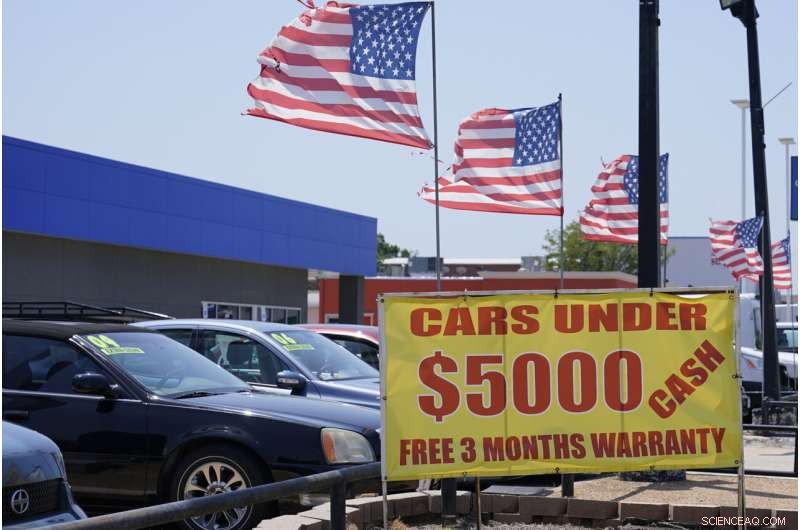
Begagnade bilar till salu visas torsdagen den 24 juni 2021 i Oklahoma City. Priserna på begagnade bilar har skjutit i höjden så högt, så snabbt, att köparna i allt högre grad prissätts bort från marknaden. Kredit:AP Photo/Sue Ogrocki
De dagar då nästan vem som helst med en stadig inkomst kunde vandra in på en bilpark och få tag i en pålitlig sen modellbil eller köpa sitt barns första fordon för några tusen dollar har i princip försvunnit.
"Jag har aldrig sett något i närheten av detta - det är galenskap", säger Schrier, som har sålt bilar i 35 år. "Det är ganska frustrerande för så många människor just nu."
När regeringen rapporterade att konsumentinflationen skjutit i höjden med 6,8 % under de 12 månader som slutade i november – det kraftigaste steget på nästan 40 år – var den största faktorn, förutom energi, begagnade fordon. And while the rate of increase is slowing, most experts say the inflated vehicle prices aren't likely to ease for the foreseeable future.
The blame can be traced directly to the pandemic's eruption in March of last year. Auto plants suspended production to try to slow the virus' spread. As sales of new vehicles sank, fewer people traded in used cars and trucks. At the same time, demand for laptops and monitors from people stuck at home led semiconductor makers to shift production from autos, which depend on such chips, to consumer electronics.
When a swifter-than-expected economic rebound boosted demand for vehicles, auto plants tried to restore full production. But chip makers couldn't respond fast enough. And rental car companies and other fleet buyers, unable to acquire new vehicles, stopped off-loading older ones, thereby compounding the shortage of used vehicles.
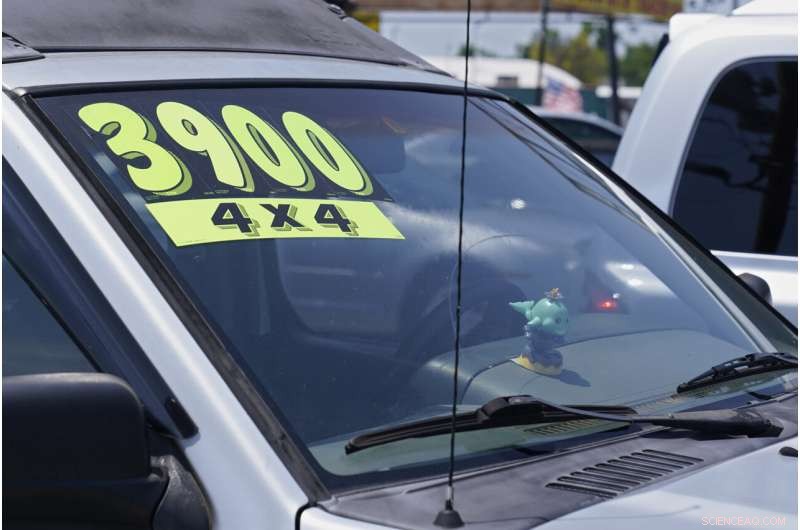
Used cars for sale are on display Thursday, June 24, 2021, in Oklahoma City. Prices for used cars have soared so high, so fast, that buyers are being increasingly priced out of the market. Credit:AP Photo/Sue Ogrocki
Bleak as the market is for used-car buyers, the computer chip shortage has also driven new-vehicle prices higher. The average new vehicle, Edmunds.com says, is edging toward $46,000.
Even so, prices of used cars are likely to edge closer to new ones. Since the pandemic started, used vehicle prices have jumped 42%—more than double the increase for new ones. Last month, the average used vehicle price was 63% of the average new vehicle cost. Before the pandemic, it was 54%.
At this point, Schrier has to tell lower-income buyers that he has very few used vehicles to sell them.
"What used to be a $5,000 car," he said, "is now $8,000. What used to be $8,000 is now $11,000 or $12,000."
Including taxes, fees, a 10% down payment, and an interest rate of around 7.5%, the average used vehicle now costs $520 a month, even when financed for the average of nearly six years, Edmunds calculated.

This June 24, 2021 photo shows used cars for sale in Oklahoma City. Prices for used cars have soared so high, so fast, that buyers are being increasingly priced out of the market. Credit:AP Photo/Sue Ogrocki
Ivan Drury, a senior manager at Edmunds, said that while he doesn't track used vehicle prices relative to household income, he thinks November marked a record "in the worst way possible for affordability."
Monthly payments for the average used vehicle, he noted, were $413 two years ago, $382 five years ago and $365 a decade ago. The November average payment of $500-plus for a used vehicle, Drury said, is about the average that was needed five years ago for a brand-new vehicle.
Used vehicle prices are so high that Karl Hogan of Canonsburg, Pennsylvania, near Pittsburgh, was able last month to quickly sell his 2007 Toyota Tacoma small pickup truck, with more than 170,000 miles on it. Even with the vehicle's age and mileage, a man from Ohio forked over $6,500 for it.
Hogan didn't have to budge from the asking price. When some would-be buyers offered him less money, he told them:"I've got 12 other guys behind you."
A week before the sale, when he bought his new Tacoma, Hogan had been on the other side of the equation. The dealer wouldn't budge from his $38,000 sticker price.
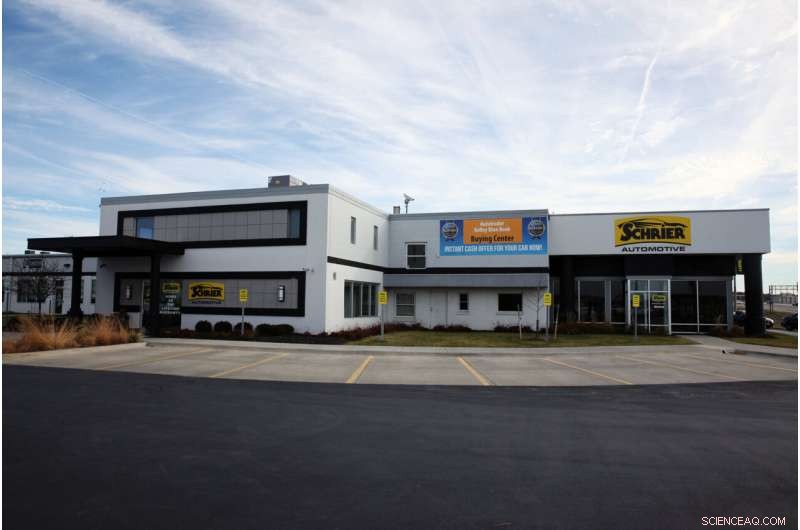
Schrier Automotive in Omaha, Nebraska, sits with a partially empty sales lot caused by high demand for cars on Monday, Nov. 29, 2021. Prices for used cars have soared so high, so fast, that buyers are being increasingly priced out of the market. AP Photo/Grant Schulte)
"If I didn't take it," Hogan said, "there were three people waiting. I couldn't get any off, but I wanted a new truck."
David Paris, a senior manager at J.D. Power, noted that used vehicle prices are directly tied to the cost of new ones. Though some automakers report that the computer chip supply is gradually improving, prices paid by dealers at used vehicle auctions kept rising through November, Paris said.
"We're not seeing any softening in prices, which is extremely rare for this time of the year," he said.
New vehicle dealers have about 1 million vehicles available nationally—scarcely one-third of the normal supply, Paris said. And the vast majority have already been sold.
Given pent-up demand from consumers, prices for new vehicles are expected to remain historically high until the supply returns to around 2 million or 2.5 million and automakers resume discounting, which could take well into 2023. Once new vehicle prices do ease, the pressure on used-vehicle prices would eventually follow.
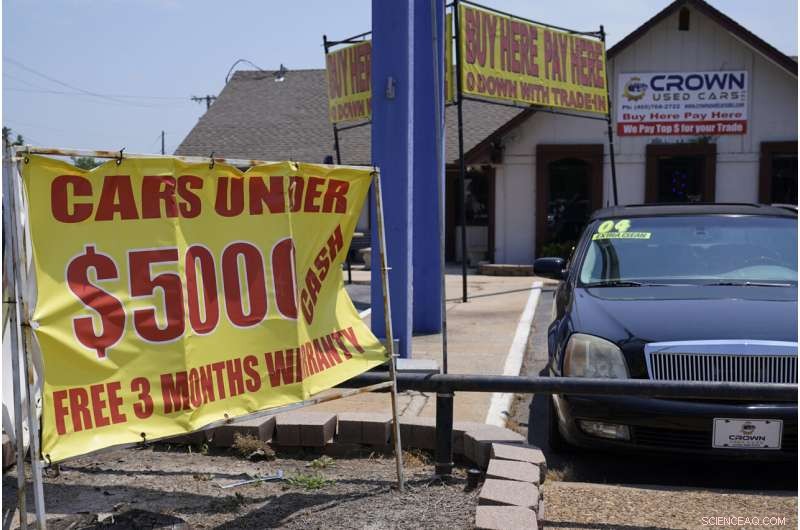
Used cars for sale are pictured Thursday, June 24, 2021, in Oklahoma City. Prices for used cars have soared so high, so fast, that buyers are being increasingly priced out of the market. Credit:AP Photo/Sue Ogrocki
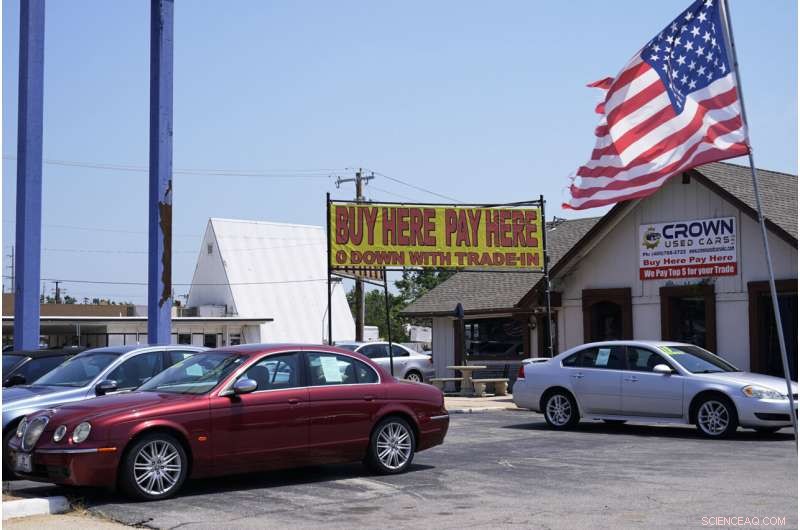
Used cars for sale are pictured Thursday, June 24, 2021, in Oklahoma City. Prices for used cars have soared so high, so fast, that buyers are being increasingly priced out of the market. Credit:AP Photo/Sue Ogrocki
Yet even after that, the availability of vehicles will be tight because traditional sources of used vehicles—autos turned in from leases and trade-ins or sold by rental companies—have essentially dried up.
For the past decade, cars returning from two- and three-year leases were a leading source of almost-new used vehicles. But that was when more than one-third of U.S. new vehicle sales were leases, a figure now down to 22%, said Edmunds' Drury. Because there aren't many new autos, people with expiring leases are often buying those cars once their leases end.
Rental companies, another key source of late-model used cars, can't buy new ones now and are holding the ones they have. Some rental companies are even buying used vehicles. Given all those factors, Paris expects the shortage of used cars to worsen through 2024.
Among the few consumers who stand to benefit are those who want to sell a used car and don't necessarily need to replace it. The average trade-in value in October, Paris said, was $9,000—twice what it was a year earlier.
But for people who have no vehicles to trade in and only modest incomes, the options are few to none. J.D. Power's Paris says that if they can afford it, buyers should consider a new vehicle. He recently managed to get a couple thousand dollars whacked off the sticker price on a new Ram pickup, though he had to travel from the Washington, D.C., area to Philadelphia to reach a willing dealer he had located by searching internet forums.
"If you look hard enough and are willing to wait and travel," he said, "you can find deals across most brands."